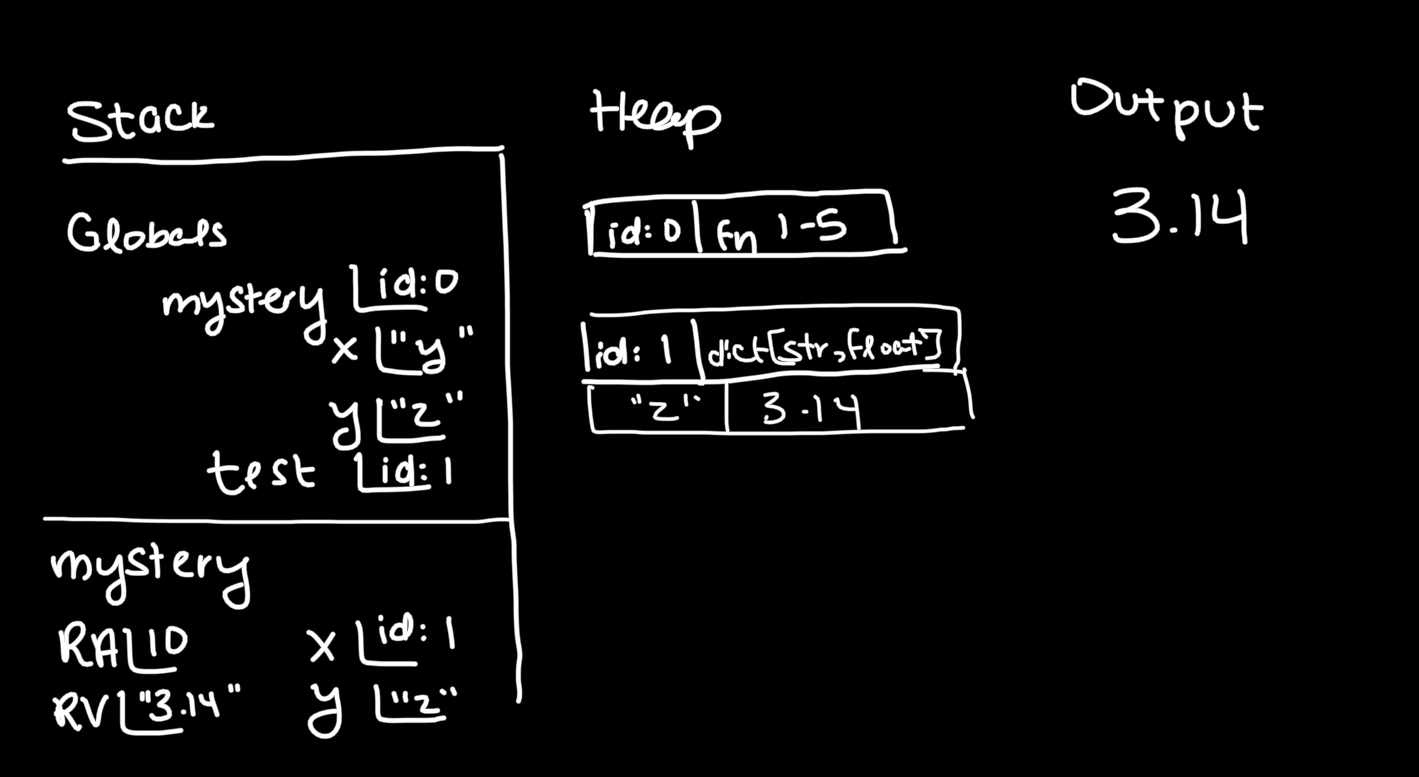Snippet
def mystery(x: dict[str,float], y: str) -> str:
if y in x:
return str(x[y])
else:
return "not in dictionary"
x = "y"
y = "z"
test: dict[str,float] = {"z": 3.14}
print(mystery(test,y))Solution

Image Description: The memory diagram provided displays elements in the Output, Stack, and Heap sections.
Stack:
The Globals frame contains three variables and a function: * Function mystery points to a function definition on the Heap spanning lines 1 to 5. * Variable x with the string value “y”. * Variable y with the string value “z”. * Variable test points to a dictionary on the Heap.
The mystery frame has: * Return Address (RA) at line 10. * Return Value (RV) is the string “3.14”. * Variable x points to the same dictionary object as test * Variable y has a value of “z”.
Heap: * A dictionary object with string keys and a floating-point value is present. It contains a single entry where the key is the string “z” and the value is the floating-point number 3.14.
Output: The output section shows the floating-point number 3.14.